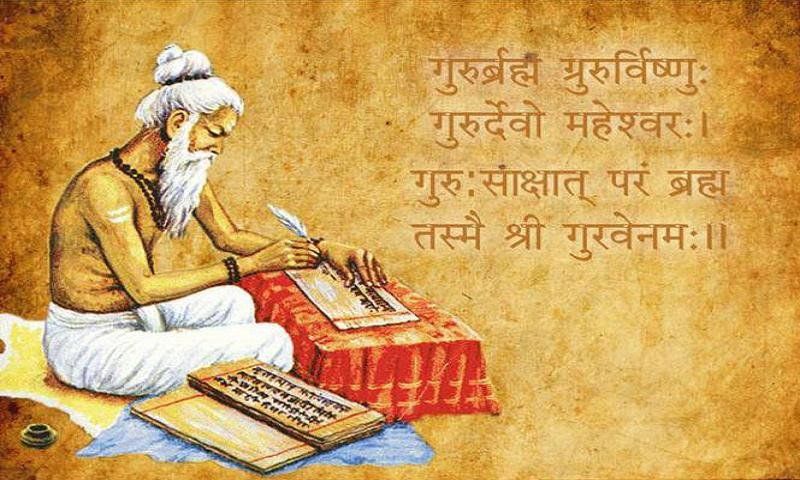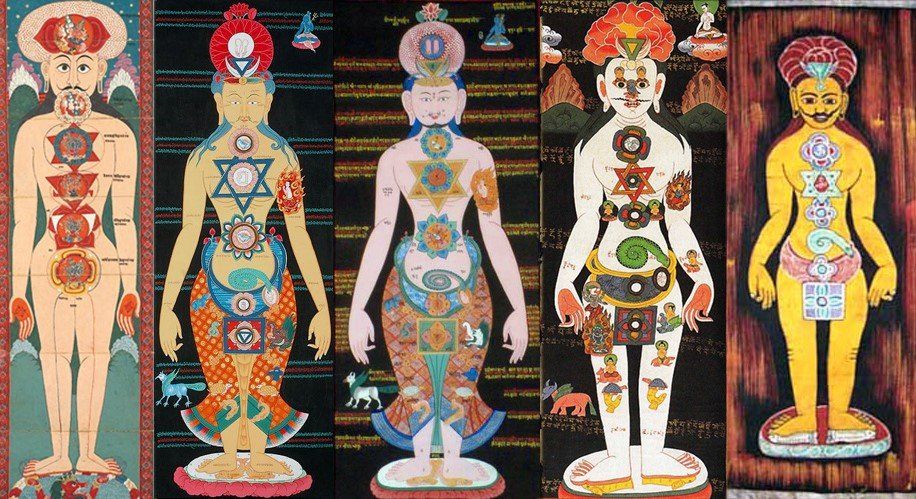Chakras: Centers of Consciousness, evolved
A natural evolution of the chakra system

The chakra system was first mentioned in the Vedas (/ˈveɪdəz/, IAST: veda, Sanskrit: वेदः, lit. 'knowledge'), a large body of religious texts originating in ancient India. The texts are of the oldest in Sanskrit literature, and include the oldest scriptures of Hinduism. We're talking about 2,000 - 600 B.C. (which can be hard to wrap our minds around). The original meaning of the word chakra is "wheel", which often gets interpreted as the literal way our energy rotates through these centers and get circulated through our systems. It is thought however that the word was meant to be a metaphor for the sun, and denotes the eternal cycle of time called the "Kālacakra", or wheel of time. If interpreted in this way, it represents celestial order and balance.
There is mention of the chakras as "psychic centers of consciousness" in the Yoga Sutras of Patanjali (circa 200 B.C.) and again later in the Yoga Upanishads (circa 600 A.D.). When studying the use of chakras from their Sanskrit source, they were traditionally used as focal points of meditation within the human body, or in other words a template if you will for a nyāsa. This process was thought to empower the divination of the body through mantra and focus on the deities that associated with each center.
According to Shaman Alberto Villoldo, "references to the chakras are found among the Hopi, the Inka, and the Maya, as well as many other aboriginal cultures around the world." This ancient form of understanding ourselves through the chakras changes within the context of each tradition, language, and culture it is experienced within. From my perspective, this is a natural form of evolution. As I've heard it talked about before, even though Isaac Newton put a name to gravity, it doesn't mean this way of looking at things belongs to him.

Much of the modern-day understanding of the chakra system we understand in the Westerns world has evolved away from traditional ancient Indian practices. In all honesty, even the most traditional Sanskrit sources can be confused by modern day interpretations such as Pūrṇānanda's 16th-century text that is the basis of the popular modern chakra system (before it was Westernized).
My point is that all of this understanding is evolving and adapting to fit different populations, different times, and different places in which consciousness expresses itself, which I don't think is inherently bad. In fact, it feels to be quite the contrary. I believe this is incredibly natural. This is how all of nature evolves. Human beliefs and frameworks are no different. I feel it could be a loss to humanity, if ancient practices didn't evolve to be more applicable in today's world with the people who are using them.
That being said, with full disclosure, I admit that my understanding of the chakra system comes as a product of learning about these centers through a Westernized lens, at this particular place and time.
I pay respect to the fact that from the ancient Indian perspective of these centers never originally had colors assigned to them, nor attributes of the human psyche put onto them. There was never mention of healing methods through particular crystals and essential oils in the mouths of those who passed on this tradition for many centuries.

While there has been evolution to the understanding of the chakra system throughout the years, the Seven Centers Practice, still honors some of the most traditional intentions of their use as focal points of our consciousness. This practice has been carefully adapted to be a practical framework of exploring your internal system and the foundations of your perception.
The Seven Centers Practice effectively takes the position that our centers of consciousness build our perception and ultimately get informed, hurt, and thrown out of balance from the experiences we have throughout our lives.
Furthermore our seven main centers of consciousness (although there are more) each have roles in the system that are organized around particular topics, such as the information we receive from our body and nervous system about safety, feelings of home, etc. This particular information for example, gets stored in the center of consciousness we call the Root. Each particular energy center is embodied along the spine and have differing roles that make up our felt perceptions and beliefs about our sexuality, creativity, assertion, identity, connection, communication, visualization, creation, dreams, spirituality, and more.
By getting to know each center of consciousness (and their relationships with each other) as well as the ways their existence molds our perception, we are able to better gain awareness of ourselves as full beings. This allows us to not only better understand ourselves, but it also helps us take control of our lives instead of allowing these centers of consciousness to run on auto-pilot in the background.
I am a therapist, and while I promote therapy I recognize that the Westernized psychological framework falls short because we're so hyper-focused on the mind that sits "up in our heads." The more we understand about the intricate biological and energetic systems we inhabit, the more we understand that Westernized psychology does not have all of the answers. The daily, practical framework the
Seven Centers Practice offers can help you understand why you are the way you are, and can ultimately transform your life.
Have any questions, or want to book a private session? Feel free to send me an email.
Can't wait to connect with you soon,
Morgan

